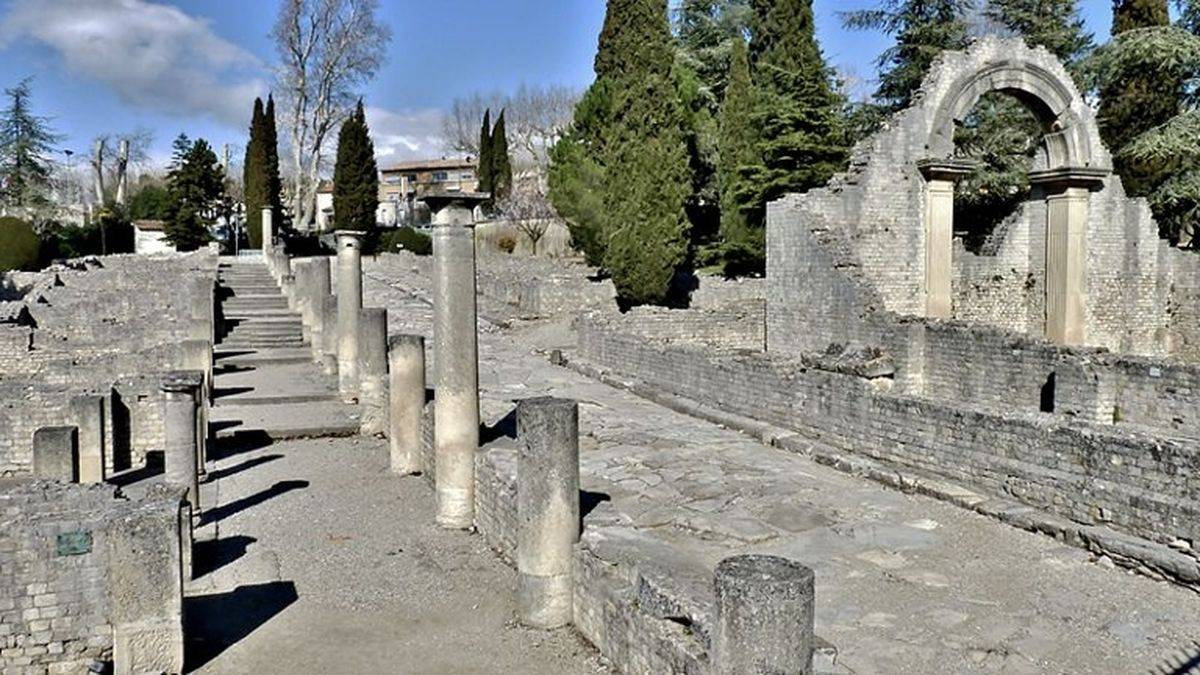 A shopping street | ©Brigitte Boudier / CC-BY-SA
A shopping street | ©Brigitte Boudier / CC-BY-SAThe antic Vasio
Vaison-la-Romaine, the aptly named! Former Vasio Vocontiorum, ″Voconces’ vase″…
Voconces was a Celtic people settled here in the 5th century BC. Then, Romans settled in the 1st century BC and transformed the place into an important city.
Several buildings were raised: arenas, rich houses, theaters, thermal baths… Two aqueducts brought water to the city. Sewers evacuated dirty waters.
Houses were between 2000 and 5000 square metres. Pretty vast!
The first discoveries took place in the 17th century. Later, in the 19th century, they found the old Vasio and its hidden treasures. And in 1907, father Joseph Sautel started to excavate the antic theatre…
It was Vasio’s re-discovery! In 1925, a Swiss sponsor gave millions of francs to dig Vaison.
His name? Burrus! Fun fact: Roman prefect of Vasio was a man named… Sextius Burrus!
Well, today in Vaison, we can see two well-preserved sites: come on, let’s see them!
Puymin
This is Vasio first site, with Messii’s house: the rich family estate!
It’s a typically Roman house: with the atrium, the tablinum (bedroom), the living-room or oecus, the peristyle, the kitchen and the bathroom.
Then, we have Pompeia’s portico: the entrance of the public walk. Look, it has a lovely decoration!
The galleries used to be full of fresco and statues in their niches, including the Diadumenos, currently displays in British Museum!
The nymphée: we have several rooms gathering around a long pond with a little stream. 4 columns used to support a roof.
The Roman theater: 95 metres of diameter, with a 28 metres high façade’s wall. The scene was dug in the hill: we still can see the holes for the machinery!
Raised in the 1st century and restored in the 3th century, the theater was abandoned in the 5th century: inhabitants used stones to raise their own houses, in Vaison medieval city...
La Villasse
La Villasse is the name of a house they found here. On this second site, we have a main central street with pavement, leading towards the river.
Then, the Silver-Bust house: a big estate (5000 square metres), worthy of a very rich man.
We found here a silver bust (displays in Théo-Desplans museum).
Here, we have the hall, the tablinum, the peristyle flanks by its garden, the bathes. And even a hanging garden…
Now, the Dolphin’s house: raised in 40 BC, it has a staircase and several rooms, even latrine and a bathroom! It used to be a simple farm, but the owners extended it in the 2th century to make an exceptional dwelling.
The Northern bathes: Vasio’s thermal bathes were entirely decorated with precious marbles. We found marble pieces from Africa, Greece and Italy… coming from a 70 metres long mosaic, on the outside façade!
Those bathes date back to the 2th century. They were 2500 square metres, with two hot rooms, a cold room and a locker.
